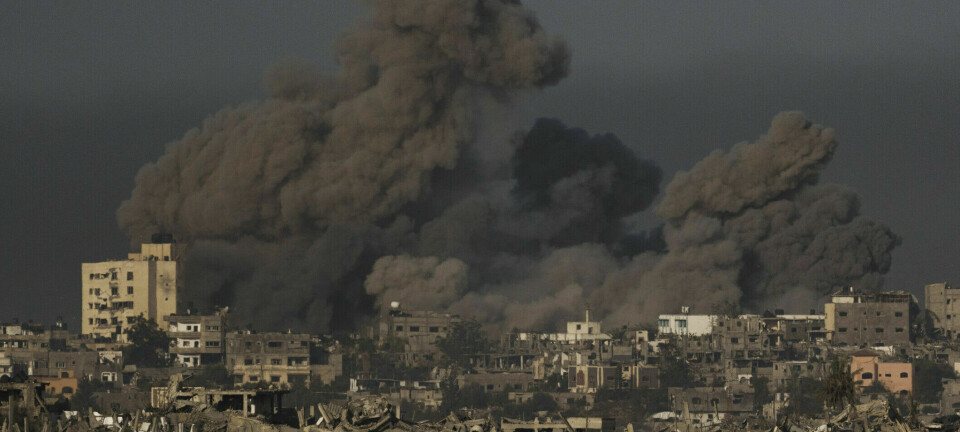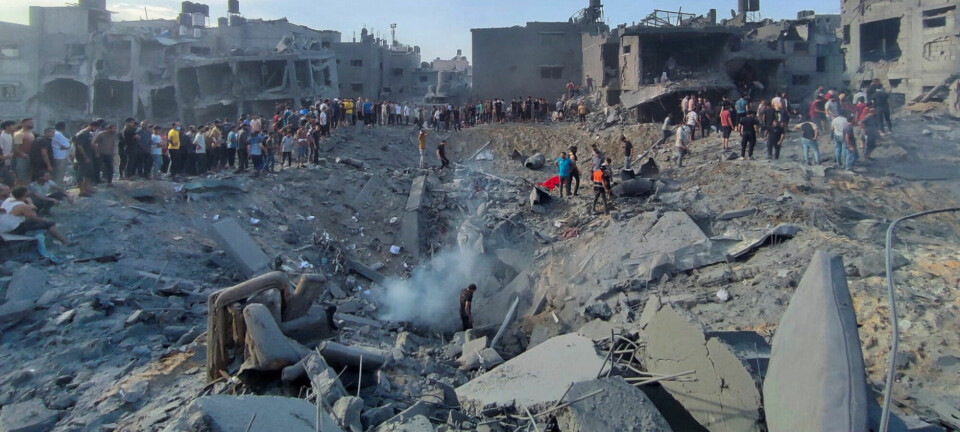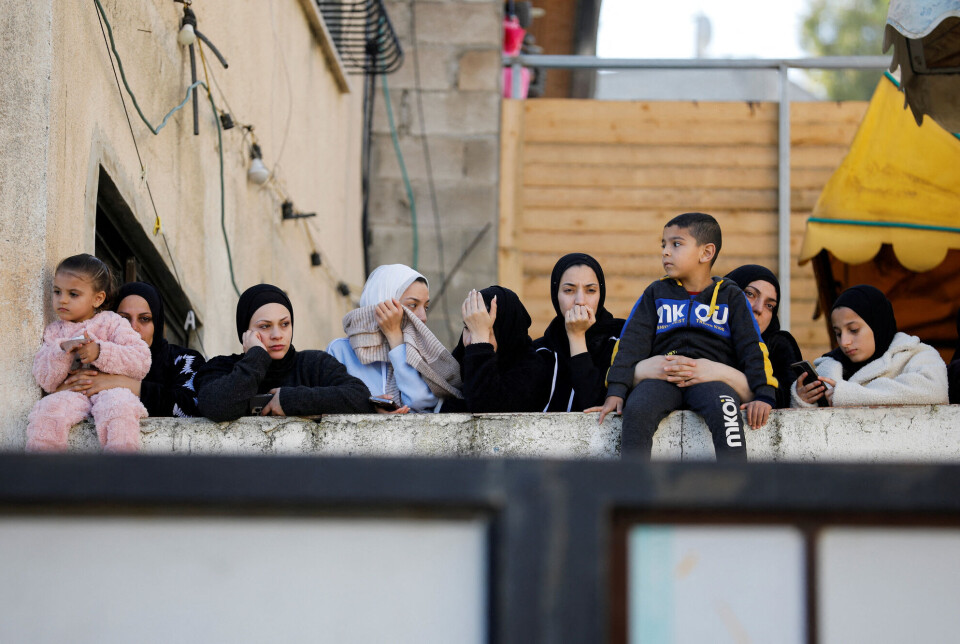
The refugee camps that lie in ruins have been the homes of Palestinians for four generations. Will they be rebuilt?
“It’s in the refugee camps that militant groups often emerge,” a researcher says.
There were 3,437 Israeli military search and arrest operations in the West Bank in 2022, according to figures from the UN organisation OCHA.
Israeli soldiers entered the refugee camps in the West Bank a total of 10,000 times in 2022, according to an internal report to the Ministry of Foreign Affairs. These were not necessarily large military operations, often they were minor incidents that caused the army to enter. They sprayed tear gas, arrested people, and killed children, says Middle East researcher Kjersti G. Berg at NLA University College. She wrote the report after an interview with a UN officer.
This creates a breeding ground for militant groups in the camps, according to Berg.
“A large number of children and adults who are imprisoned by Israel live in the refugee camps. And many of those who are killed, are killed in the refugee camps – or near them,” she says.
“The Palestinian resistance is a direct and concrete result of the brutal and long-lasting Israeli occupation. What matters more than religion is where the Palestinians live.”
That is, whether they live in a refugee camp or not.
“It’s also in the refugee camps that militant groups often emerge,” the researcher says.
Israelis arrest children
Last year, the UN counted how many times the Israeli army entered the refugee camps in the West Bank.
It turned out to be more than 25 times a day over the course of one year.
Berg mentions that minor incidents can prompt the army to enter the camps. For instance, as a response to incidents like children throwing stones at a watchtower, they might deploy tear gas in schools.
There may also be operations where the Israeli army claims to ‘take out’ militant Palestinians in the camp.
“The Israeli army is very brutal, and it often affects civilians. The army also enters with bulldozers and destroys houses, roads, and buildings, both as individual and collective punishment,” Berg says.
Religion acts as a unifying force
She points out that religion is used in the resistance movement and is part of nationalism. Being a Muslim, therefore, serves as a unifying force for Palestinians.
“It’s also important to understand that the violent resistance emerging among Palestinians grows faster in the camps than in other places. And this is not a coincidence,” Berg says.
“People living in the camps are vulnerable. The identity of refugees is deeply marked by the trauma of being displaced in 1948. Subsequently, they have experienced further losses and oppression under the occupation. Young people grow up without a horizon of positive change,” she says.
Other types of resistance exist
Helena Lindholm, a professor of peace and development research at the University of Gothenburg, emphasises to sciencenorway.no that there are many forms of resistance against the Israeli occupation among Palestinians, and that this resistance has evolved over time.
“The majority of the resistance that exists is actually more everyday and non-violent,” she writes in an email to sciencenorway.no.
This applies to both refugees and non-refugees. Lindholm agrees with Berg that the violent resistance is not related to religion or religiosity, but to oppression.
“It also concerns the fact that the refugee issue has been forgotten and neglected for a very long time and has not come any closer to a solution,” according to Lindholm.
Six million refugees
So where are these refugee camps? And who lives there?
The West Bank and Gaza consist of refugee camps and ordinary cities, towns, and villages.
Before the war started last year, about half of all Palestinians – regardless of where they live in the world – were refugees. That is about six million people.
A third of these live in camps.
These are people who have been on the run since the war in 1948, when Israel was established and the Palestinians had to flee their houses and homes in what is now Israel. Some of them fled to other countries like Syria, Lebanon, and Jordan, but many also fled into the West Bank and Gaza.
“Then Israel closed the borders, and no one could return,” Berg says.
Berg has herself spent time in refugee camps both in the West Bank and in Gaza, Syria, and Jordan. She wrote her doctoral thesis about them, where she conducted interviews with the inhabitants and gained access to the UN Relief and Works Agency for Palestine Refugees in the Near East (UNRWA)’s own archives about the camps.
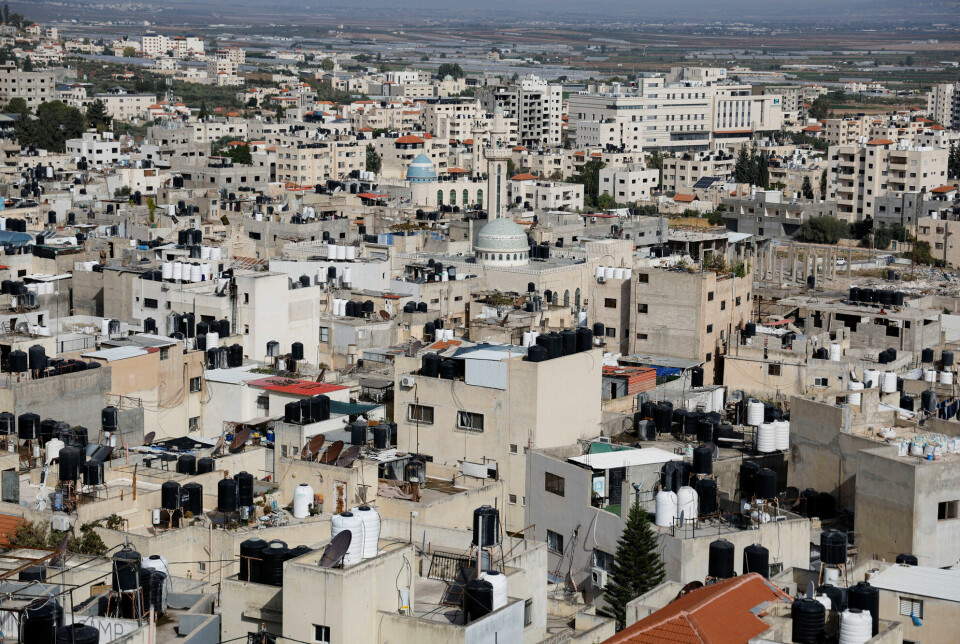
The refugee camps in Gaza
There are many aspects of the refugee camps that make the conditions demanding.
“These are vulnerable places in themselves,” says Berg.
For example, they have poorly developed roads, sewage systems, and power grids. Hospitals and schools are vulnerable, and internet coverage is low and unpredictable. There are also high levels of poverty and unemployment there.
“The camps are to a much greater extent excluded from municipal services, and many of them are invisible spots on municipal maps. They are often seen as no man's land from the authorities’ perspective,” Berg says.
Not all camps are the same, and there are significant variations in their appearance. There are also major differences in the conditions.
According to Berg, it is the refugee camps in the West Bank that are most severely affected by the occupation.

Belonging and close family ties
The reason why so many Palestinians still live in camps after so many years is partly economic. It’s the poorest who live there.
However, the sense of belonging plays a crucial role as well, along with the significance of tight-knit family connections.
“The identity of being a refugee is important and often tied to the camp. You belong to the camp, and it’s your heritage,” Berg says.
Where will they work?
There are several examples of people who have managed to move out and find jobs elsewhere. They climb the social ladder and buy apartments, houses, or land outside the camps.
However, those who move out often choose locations near the camps due to the strong sense of attachment and family ties.
In Gaza, there is extremely high unemployment, which has led to an exceptional reliance on aid, Berg explains.
“This is partly due to the blockade against Israel,” she says.
Previously, Palestinians could travel to Israel from Gaza, which many did. They found jobs in Israel and commuted across the border. But after the war and last year's blockade, this has become almost impossible.
“The war has severely impacted Gaza's economy, leading to immense social and economic challenges, exacerbating poverty problems in Gaza,” she says.
Who owns the camps?
The UN and UNRWA were involved in building the camps in the 1950s, after the war in 1948. However, they do not own the land on which the camps are built. They must rent the area from the landowners.
Those living in the camps do not own the land they live on, even though many have built homes and lived there for four generations.
She recounts an example in Syria, in the Palestinian refugee camp Yarmouk in Damascus. During the war in Syria, the Palestinians were driven out of the camp, and when some returned, the authorities had taken large parts of the land to build apartment buildings for profit.
Aiming to suppress resistance
Berg explains that attacks and destruction in and around the camps also have a long history in Gaza.
“In the 1970s, for example, Israel forced thousands of Palestinian refugees out of their homes in the camps, demolished the homes with bulldozers, and built wide roads to control the camps,” she says.
Additionally, Israel deported Palestinians from refugee camps in Gaza to Sinai and the West Bank.
“It was a strategy both to suppress resistance to the occupation and more broadly: to eliminate the Palestinian refugee issue,” she says.
Will the refugee camps be rebuilt?
Currently, 85 per cent of Gaza's inhabitants have been forced to flee, most to southern Gaza. The Israeli bombing attacks in Gaza since October 7 have destroyed 60 per cent of the housing stock and have hit the refugee camps particularly hard.
A crucial question is what happens when the war ends. Where will the Palestinians go? Will those who grew up in the refugee camps return there?
Or will the camps never be rebuilt? What do the Palestinians themselves wish for?
“Right now, it’s very difficult to envision what will happen,” Berg says.
Everything depends on Israel's warfare.
“Are we facing a situation where we will eventually see a mass displacement into Egypt?” asks Berg.
No more funds for aid
According to Berg, extensive Israeli disinformation campaigns are underway to undermine the UN organisation UNRWA and persuade donors to cut aid to the organisation.
Swedish researcher Helena Lindholm notes that international support for UNRWA has declined in recent years.
“This is problematic because UNRWA was responsible for, among other things, healthcare and education in the refugee camps,” she says.
Lindholm also finds it difficult to answer whether the camps will be rebuilt.
“At the same time, some form of reconstruction of Gaza will obviously be required,” she says.
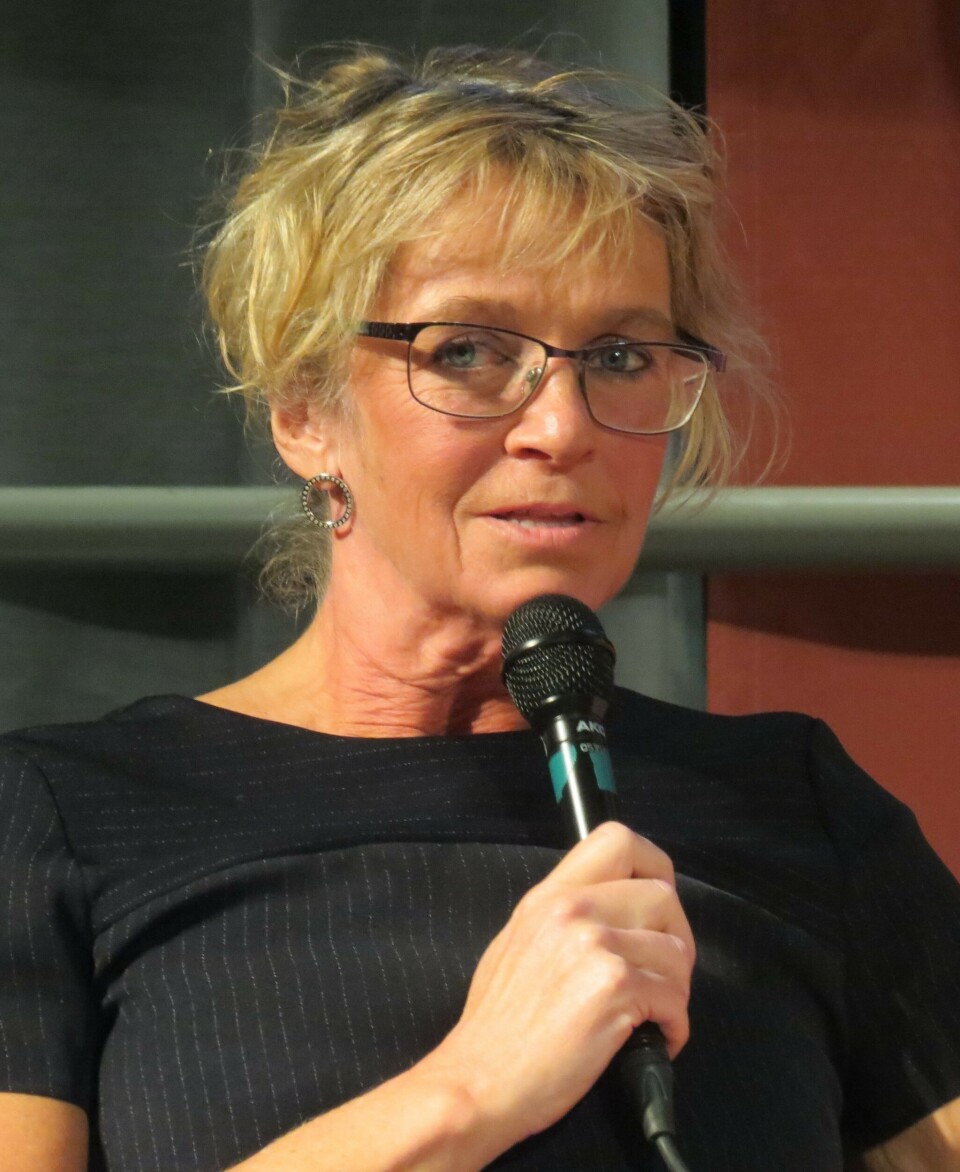
An even stricter blockade
Berg fears that theories about Israelis planning to take over larger areas in Gaza might be true.
“It’s very unclear who will govern Gaza for the Palestinians in a post-war scenario. Many speculate whether the Palestinian authorities will step in, but then under continued Israeli occupation and blockade,” she says.
Berg believes we might see a situation where Palestinians remain in a shrunken Gaza, under an even stricter blockade than before, as a sort of ‘super camp’.
“The camps represent not just belonging and identity, but also an unresolved political issue,” she says.
This, according to Berg, is crucial to highlight – the situation still appears unresolved.
Helena Lindholm shares this view.
“As long as no one negotiates a future solution to the Palestine issue that satisfies both parties' demands for justice and security, the refugee issue must somehow be managed as if it remains unresolved,” she says.
Previously rebuilt
If the camps are rebuilt after the war, it will not be the first time.
Israel destroyed large parts of the Jenin camp when the military entered in the spring of 2002, believing that Palestinian militants were hiding there. This led to over 400 homes being destroyed and a quarter of the camp's population becoming homeless. The camp was later rebuilt during the second Palestinian uprising, which ended in 2005.
However, there are also camps that have been destroyed and never rebuilt. Refugees from these camps have been displaced yet again, especially in Lebanon, Berg explains.
“For Palestinians, the camps actually represent the right to return,” she says.
Who will pay?
Numerous new questions arise in the wake of discussions about reconstruction. Who will pay for it? Will there be significant funding from Arab countries? Or will it be the USA and European countries that bear the burden?
“Some believe Israel should provide compensation, but it seems unlikely that they will,” says Berg.
“If Gaza is to be rebuilt, Israel will likely demand considerable control over this reconstruction. Perhaps Israel will oppose the rebuilding of refugee camps because they are not desired – both for what they represent and symbolise.”
———
Translated by Alette Bjordal Gjellesvik
Read the Norwegian version of this article on forskning.no













